


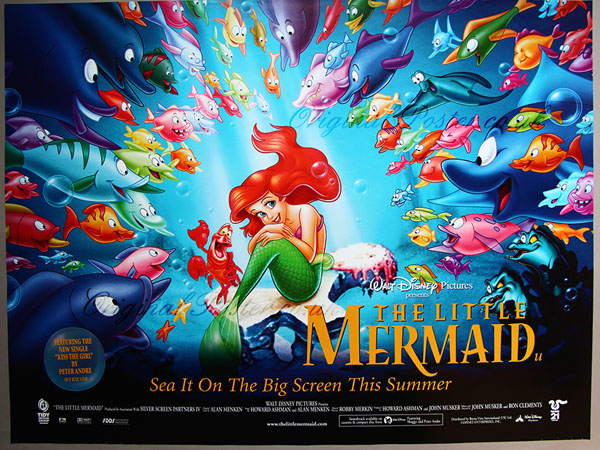
We have “The Gong Show” to thank for The Little Mermaid, Disney’s 1989 hit that kicked off their unprecedented Renaissance era of animated films.
At the Studio, “The Gong Show” meetings were modeled after the self-named game show/talent show of the 1970s, where acts would come and perform. Celebrity judges would sound a gong if they didn’t care for the act, but the performers moved forward if there was no gong.
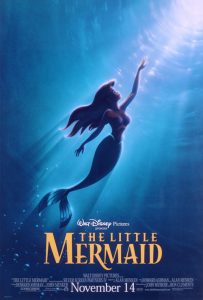 Disney adopted this model for their “Gong Show” – artists could “pitch” story ideas for future animated projects. If the pitch wasn’t met with a “gong,” it moved forward to potentially become a Disney animated feature.
Disney adopted this model for their “Gong Show” – artists could “pitch” story ideas for future animated projects. If the pitch wasn’t met with a “gong,” it moved forward to potentially become a Disney animated feature.
Director Ron Clements pitched the idea for The Little Mermaid at one of these meetings. Clements found Hans Christian Andersen’s story while browsing through a bookstore. It wasn’t “gonged” in the meeting after he pitched it, and it went forward into production.
“It was the first time that a whole new generation was going back to the roots of where things began, such as with Snow White,” recalled Clements in 1997. “We felt a certain intimidation because we knew that this film might be compared with those, more so, because there would be similarities. At the same time, we wanted to put a new spin on it so that it would reflect the new generation.”
Thirty-five years later, The Little Mermaid, which Clements co-directed with John Musker, has most definitely achieved that. The film allowed a new generation of Disney animators to finally stretch their artistic wings and a new generation of audiences to discover (or re-discover) all that Disney animation could achieve.
The Little Mermaid was considered a project at Disney as far back as the late thirties when Walt looked at the potential of a “package film” spotlighting several of Andersen’s stories. It was to have been a live action/animated film. Biographical-like segments of Andersen’s life would be intercut with animated vignettes depicting his stories, including The Little Mermaid.
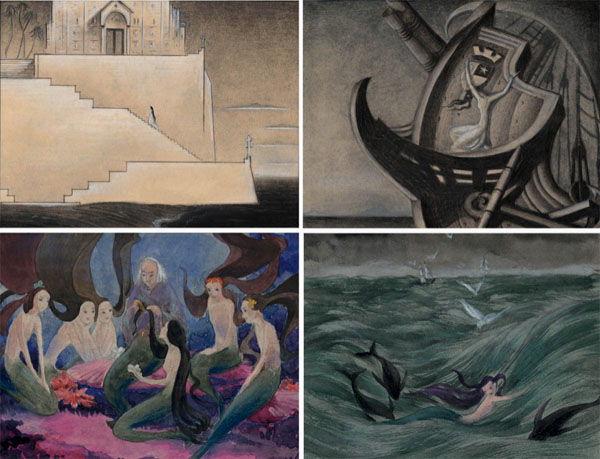
Kay Nielsen paintings for an earlier proposed Little Mermaid.
The feature never came to be, but while doing pre-production work for the film, Clements and Musker spent time at the Walt Disney Animation Studios Research Library, where their team came across conceptual artwork done for Walt’s initial version of The Little Mermaid. This included art by illustrator Kay Nielsen, who had provided the striking artwork for the Night on Bald Mountain sequence of Fantasia (1940).
Neilsen’s work offered such inspiration that he was given posthumous credit on The Little Mermaid.
The film would tell the story of young Ariel, the mermaid fascinated with the human world against her father, King Triton’s wishes, so much so that she strikes a deal with the villainous sea witch, Ursula. Ariel trades her lovely voice for a pair of human legs so she can go ashore to find Prince Eric, with whom she has fallen in love.
Ariel will remain human for three days. If she receives love’s true kiss from Eric, she will stay human permanently. If not, she transforms back into a mermaid and will belong to Ursula.
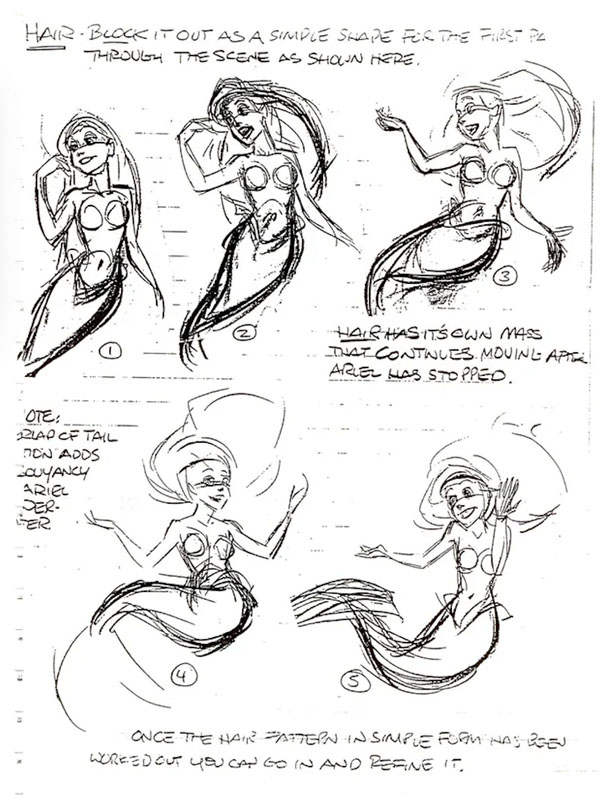
The Little Mermaid boasted a voice cast that included Jodi Benson as Ariel, Samuel E. Wright as Sebastian, the crab, the King’s court composer and Ariel’s conscience, of sorts, Pat Carroll as Ursula, Kenneth Mars as King Triton, Buddy Hackett as Scuttle the seagull, Christopher Daniel Barnes as Prince Eric, Rene Auberjonois as Louis, Eric’s chef and Paddi Edwards as Flotsam and Jetsam, Ursula’s moray eels.
The film also boasted a cast of talents when it came to animators, which included Glen Keane and Mark Henn as supervising animators for Ariel, Andreas Deja for King Triton, Ruben Aquino for Ursula, and Duncan Marjoribanks for Sebastian.
 Among the differentiators for The Little Mermaid was how music was incorporated into the story. Disney had recruited talented Broadway veteran Howard Ashman to write “Once Upon a Time in New York City” for 1988’s Oliver & Company. Ashman, along with his songwriting partner, composer Alan Menken, had crafted the hit musical Little Shop of Horrors for Broadway in 1982.
Among the differentiators for The Little Mermaid was how music was incorporated into the story. Disney had recruited talented Broadway veteran Howard Ashman to write “Once Upon a Time in New York City” for 1988’s Oliver & Company. Ashman, along with his songwriting partner, composer Alan Menken, had crafted the hit musical Little Shop of Horrors for Broadway in 1982.
The duo came on board The Little Mermaid, and it proved to be a tremendous creative catalyst. “The idea of having a musical team right in the next room, so as you were storyboarding something, you could go next door and talk with Howard and Alan,” noted Musker in 1997. “Then, they could come over and see the artwork and say, ‘There’s something there that I can use.’ In a way, that was a throwback to a system that was around in the ’30s but had gone away.”
Ashman, in particular, had an innate sense of music informing the plot, and emotion. “He brought a new sensibility, in terms of how he saw music weaving into the story, that did set all this off,” said Musker. “Howard’s involvement was a watershed and a turning point. We had never done anything like that before. It was a big learning experience for all of us. Working with Howard made us feel as if this was something special.”
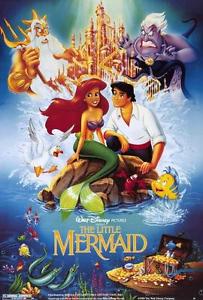 Ashman and Menken’s songs in The Little Mermaid, including “Part of Your World,” “Kiss the Girl,” and the Oscar-winning “Under the Sea,” have become some of the most instantly recognizable in Disney’s songbook, and some of the most famous in movie musical history.
Ashman and Menken’s songs in The Little Mermaid, including “Part of Your World,” “Kiss the Girl,” and the Oscar-winning “Under the Sea,” have become some of the most instantly recognizable in Disney’s songbook, and some of the most famous in movie musical history.
Released on November 17, 1989, The Little Mermaid bowled over audiences, becoming a tremendous success for Disney. Many critics placed the film on their top ten list for the year and praised it.
“It’s funny, romantic and – OK – scary, just as it should be,” wrote film critic Jami Bernard when The Little Mermaid opened. “This kind of terror is enthralling, stimulating. Just as yesterday’s kids cowered at Bambi and Pinocchio, films they remember now with great affection, let today’s kids see how powerful animation can be.”
Now celebrating its thirty-fifth anniversary, the success of The Little Mermaid can be seen as a “flashpoint” for all that was to come for Disney in the next ten years. The film ushered in a string of landmark successes at the Studio, which included Beauty and the Beast, Aladdin, The Lion King, and more.
The Little Mermaid also secured its place among Disney’s DNA of classic and timeless fairy tale films, which continues in popularity, inspiring a successful live-action adaptation last year.
“For me, personally, as far as any sense of, ‘Will the public like this?’ or ‘Will this be a big hit?’ I honestly had no sense of that,” said Musker, reflecting on the success of The Little Mermaid in 1997. “We were very innocently trying to just make the best film that we could. In hindsight, you can see how things have worked out, but I had no idea that it would reach the audience that it has and move into some of the pop cultural things the way it did.”
Again, thank you to “The Gong Show.”